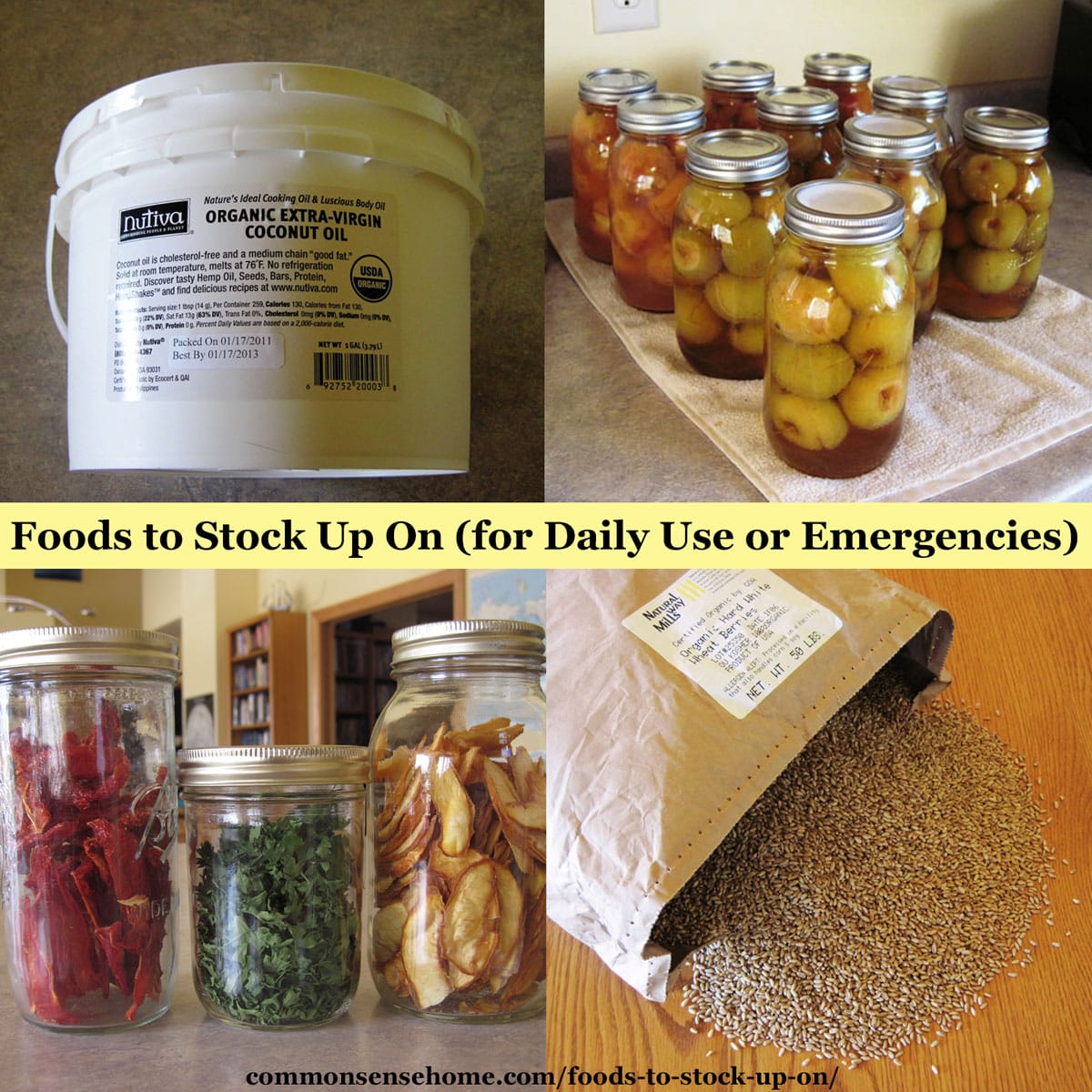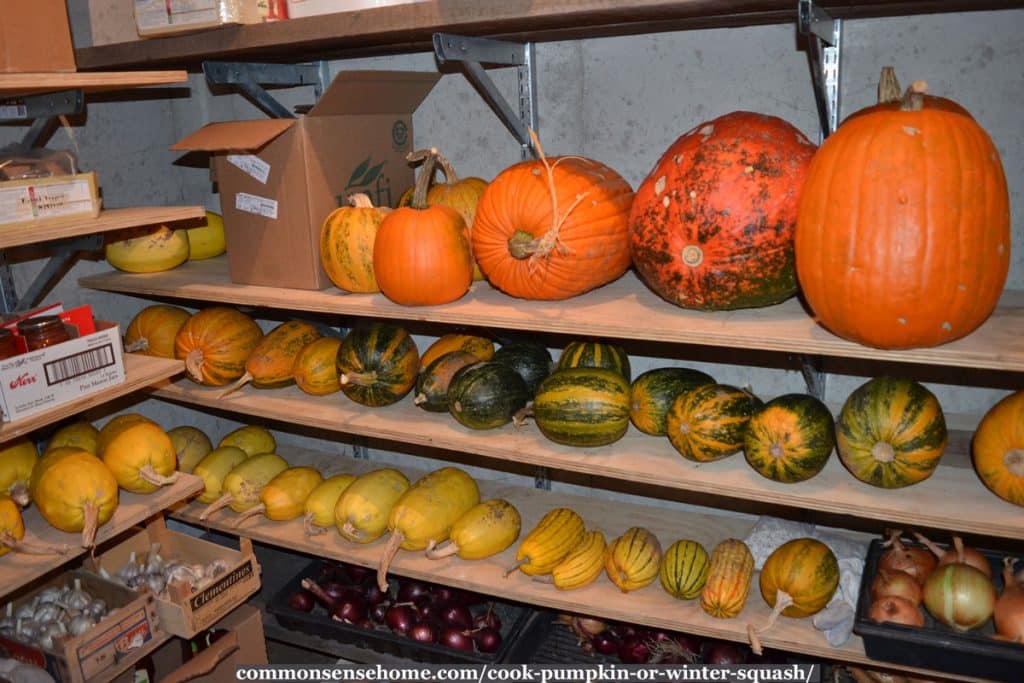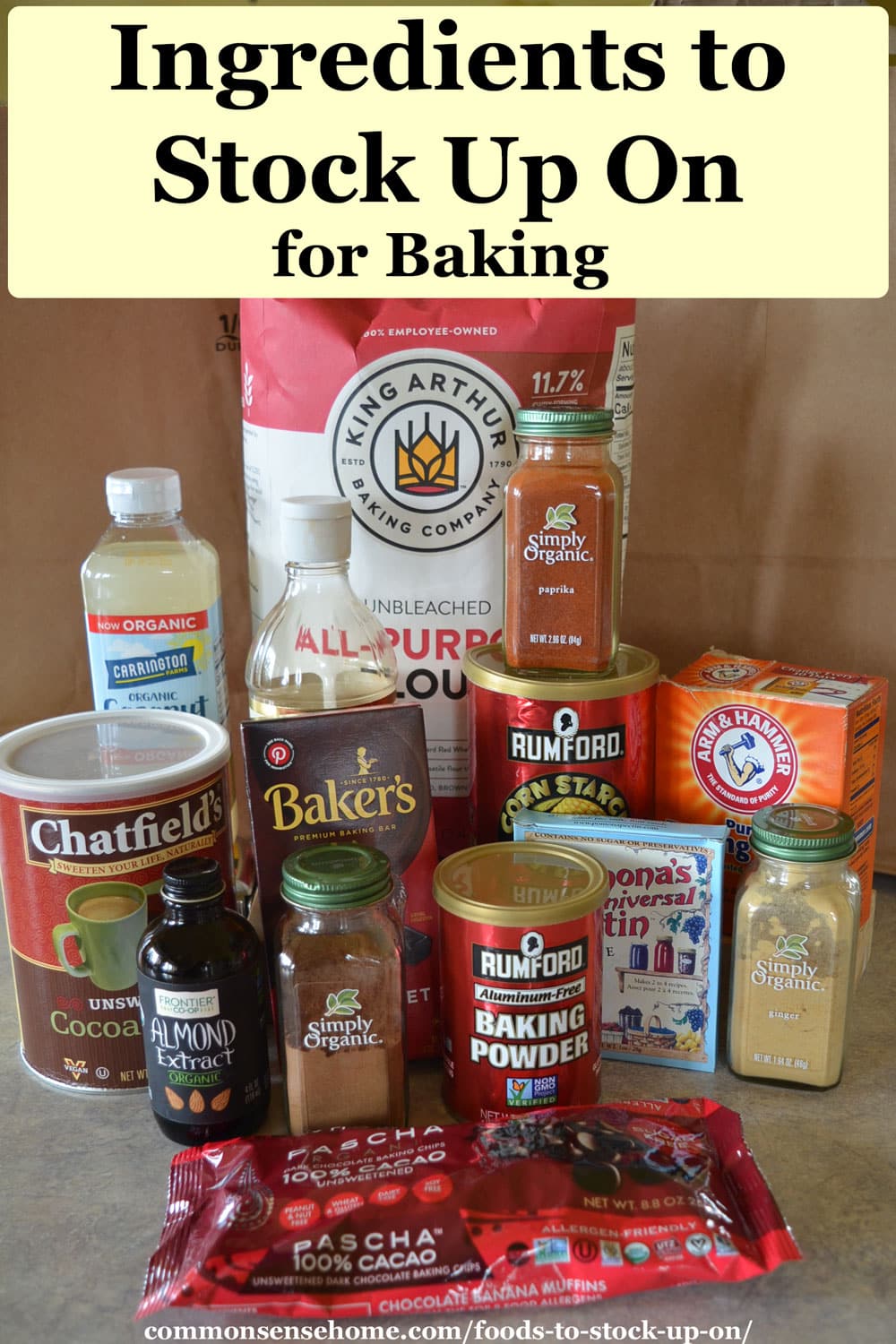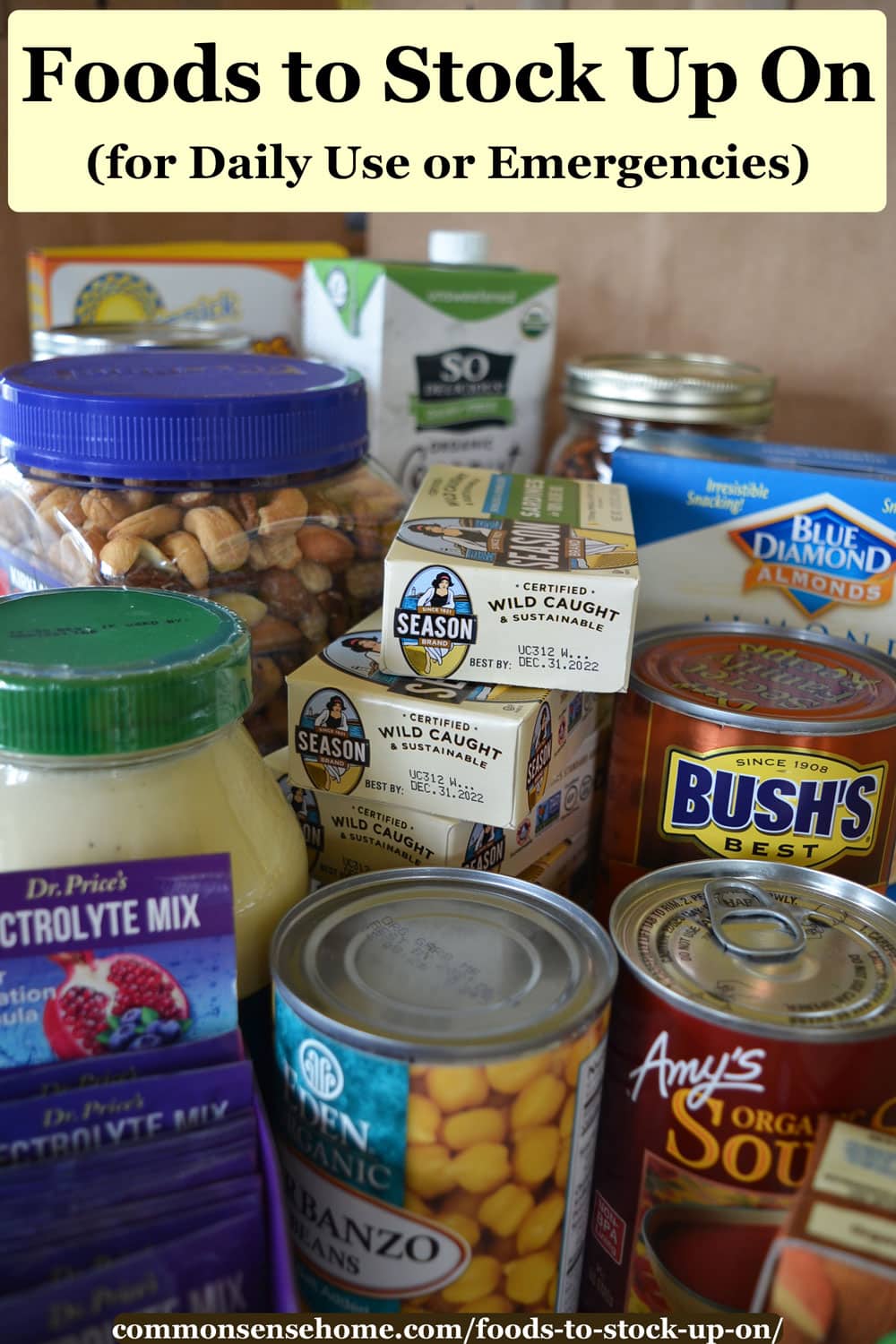Foods to Stock Up On (for Daily Use or Emergencies)
This post may contain affiliate links. Read my full disclosure here.
We’ll help you choose the best foods to stock up on for a working pantry and short term emergency food supply.
My favorite grocery store is a half an hour away, so I do my best to always keep pantry staples on hand.

Table of contents
- Stocking Up The Smart Way
- Best Foods to Stock Up On
- Meats and Fish (or Vegan Alternatives)
- Fruits and Vegetables
- Fats and Oils
- Broth or Stock, Bouillon
- Peanut butter, nut butters, seed butters
- Canned or Dried Beans
- Eggs
- Cheeses
- Prepared side dishes, meals and soups – canned, freeze dried or frozen
- Pasta and pasta sauces
- Milk – dried or shelf stable milk for longer storage, plant based milks
- Grains or grain substitutes, flours, cereals
- Coffee, tea and other beverages
- Spices, including salt and pepper
- Sugar and other baking supplies
- Condiments
- Nuts and seeds
- Snacks – crackers, chips, granola bars, popcorn, jerky, etc.
- Don’t Forget Canning Supplies
- More Than Foods to Stock Up On
- Related Articles
Stocking Up The Smart Way
First, assess your cooking skills, dietary preferences, and storage space.
How well can you cook and bake?
If you’re confident in the kitchen, you can stock more ingredients. If you’re used to having someone else do the cooking, ready to eat items are a better fit.
How do you prefer to/need to eat?
There are many different eating strategies and food allergies. The foods you stock up on should be foods you want to/need to eat.
For instance, if you need to eat gluten free, stock up on the rice based dried pasta, not wheat pasta.
If you want to eat low carb, opt for meat and vegetables instead of black beans and rice. Plant based diet? Nut butters and tempeh may be your “go to” storage items.
How much refrigerator, freezer and pantry space do you have?
Buying a 20 pound crate of fresh fruit isn’t a good idea if you don’t have enough cool storage to keep it fresh until you finish eating it.
On the flip side, if you have a dehydrator and turn it into dried fruit, you increase the shelf life and save refrigerator space. Then you have that space available for other foods. (Canning and home freeze drying are also great for shelf stable food storage.)
Frozen food is convenient, especially frozen meals, but if you lose power, you’re in trouble. Non perishable food (food that doesn’t need refrigeration or freezing) stays safe to eat, even when the power goes out.
Best Foods to Stock Up On
- Meat and fish – canned or frozen (or vegan alternatives)
- Fruits and vegetables – canned, dehydrated, fresh and frozen
- Fats and oils
- Broth or stock, bouillon
- Peanut butter, nut butters, seed butters
- Canned or dried beans
- Eggs
- Cheeses
- Prepared side dishes, meals and soups – canned, freeze dried or frozen
- Pasta and pasta sauces
- Milk – dried or shelf stable milk for longer storage, plant based milks
- Grains or grain substitutes, flours, cereals
- Coffee, tea and other beverages
- Spices, including salt and pepper
- Sugar and other baking supplies
- Condiments
- Nuts and seeds
- Snacks – crackers, chips, granola bars, popcorn, etc.
Note: If the foods you stock up on include canned goods, make sure you have a non-electric can opener.
Meats and Fish (or Vegan Alternatives)
Protein reduces production of the “hunger hormone”, ghrelin, helping you to feel full.
Canned or pouched tuna or salmon makes a quick base for a meal or snack. Tempeh, tofu and other plant based products fill a similar role for plant based eaters.
When storing chicken, beef and other meats, keep in mind that fresh meats spoil more quickly than cooked meats. Ground meat and poultry spoils faster than whole cuts like steak or roasts. Smoking and curing increases shelf life.
In general, raw meats should be used within 1-2 days, cooked meats are okay for 3-4 days. Luncheon meats may last up to 2 weeks, unopened.
See the Cold Storage Food Chart for more detailed recommendations, use your common sense, and check expiration dates. If meat smells or looks “off”, don’t use it.

Fruits and Vegetables
I suspect nearly every zombie apocalypse movie ever made shows people surviving on canned fruits and vegetables, but they don’t last forever. A couple years after that “best by’ date your green beans will taste more like “can” than beans.
Over a period of time, cans also start to corrode, especially those with acidic contents like tomatoes. As foods sit in storage, they also lose vitamins and minerals. Make sure to rotate your stock.
Canned foods may contain added sugars or salt to boost flavor and shelf life. Check the label so you know what you’re buying.
In our home, we can green beans from the garden, but freeze, dehydrate, freeze dry or root cellar the other vegetables.
Fresh garlic, onions, potatoes, tomatoes, winter squash, and sweet potatoes will store for a time at room temperature. (Shelf stable vegetables are some of the easiest foods to stock up on.)
Many fruits also hold well at room temperature, like citrus, apples, stone fruit, pineapple and melons. In fact, it’s best not to chill your watermelon until you’re ready to eat it.
Fats and Oils
Fats add flavor and make it a whole lot easier to fry almost anything. (The air fryer won’t work in a power outage, but you can check out emergency cooking options here.)
Olive oil and most saturated fats (like coconut oil, lard or butter) have a longer shelf life than unsaturated or polyunsaturated fats. Ghee is shelf stable and may be tolerated by those who are lactose intolerant.
Broth or Stock, Bouillon
Broths, stocks, and bouillon act as a base for soups and sauces, and add flavor to many different dishes. We use homemade broth or low sodium bouillon for more flavor without a ton of extra salt.
Peanut butter, nut butters, seed butters
Peanut butter is a classic food to stock up on. For those with peanut allergies, nut and seed butters give the same flexibility for meals and snacks.
Use your PB in recipes, sandwiches, or for dipping fruits and veggies.
Canned or Dried Beans
Side dish, snack or main dish, beans are budget friendly with a good shelf life.
Not sure what to do with your beans? Check out these bean and lentil recipes, which include everything from soup to dessert.
Eggs
Here in the U.S.A., most people are used to seeing eggs refrigerated, but they can be stored at room temperature if they are unwashed. Grocery store eggs are always washed, and must be refrigerated.
We keep the eggs from our chickens and ducks unwashed on the counter for a week or two with no issues. (Washing eggs removes the protective coating on the outside of the egg.)
Refrigerated, eggs can last for weeks, though the quality does decline over time. As eggs get older, you’ll notice that the yolks break more easily, the whites spread farther, and the air pocket is larger.
For longer room temperature storage of eggs, try water glassing (covering the eggs in lime water). Clean, unwashed eggs covered in lime water will keep in a jar or bucket for months.
Cheeses
Aged hard cheeses have the longest shelf lives, soft cheeses like cottage cheese the shortest. Cheeses add a ton of flavor to meals and snacks.
Would you like to save this?
Rule of thumb – the drier the cheese, the longer the shelf life.
Prepared side dishes, meals and soups – canned, freeze dried or frozen
Through the miracle of modern food processing, we have a ton of prepared food options.
Canned foods are handy because you don’t (usually) need to add water before serving. In a power outage, this can stretch your water storage. You also don’t need to worry about you food stash thawing out.
For the longest shelf life, look to freeze dried foods. Make sure to check the labels for expiration dates. Some last a year or two, others can last 20 years or more.
It’s also possible to freeze dry your favorite foods at home with a Harvest Right freeze dryer. Learn more about home freeze drying here.
Pasta and pasta sauces
Open a jar or can, boil some pasta, and you have a simple meal. It doesn’t get much faster than that for home prepared “fast food”.

Milk – dried or shelf stable milk for longer storage, plant based milks
Dried milk powder doesn’t quite taste like fresh, but it works quite well in recipes. Canned and boxed milk and plant based milks can last for months in the pantry.
Grains or grain substitutes, flours, cereals
Whole grains like wheat berries last longer than ground flour, but you do need a home grain mill to use them.
I like to stock up on bread flour, gluten free flour, and all purpose flour, plus wheat berries for when we have more time to bake.
If you need an easy to follow guide for many common breads (sandwich bread, tortillas, biscuits, pancakes and more), check out my book, Never Buy Bread Again.

Corn meal and oatmeal are great options for a lot of different recipes, like corn bread and power balls.
Quinoa and other pseudo-grains like amaranth provide gluten free options, along with the ever popular rice. Note that brown rice has a shorter shelf life than white rice.
If you enjoy cereal, breakfast cereals last for months in the pantry if not opened.
Country Life Foods has a wide range of bulk and organic foods, including foods for special diets. You can get 10% off a wide selection of items using the coupon code “COMMONSENSE” at checkout.
Coffee, tea and other beverages
Coffee and tea are as much beverages as forms of comfort. Herbal teas can act as medicine. If you’re dealing with a cold weather power outage, hot beverages can help you keep up your body heat.
For the non coffee and tea drinkers, consider canned juices or drink mixes. It’s important to stay hydrated, especially during emergencies, and stored water can taste a little “flat”. Adding a drink mix (especially one with vitamins and minerals or electrolytes) can help boost palatability.
Spices, including salt and pepper
Every cook is different, but salt and pepper show up in nearly every type of cuisine.
Some of our other frequently used spices include:
- Cumin
- Curry powder
- Cinnamon
- Vanilla extract
- Paprika
- Lawry’s seasoning
- Onion powder
- Garlic powder
- Dill weed
- Dry mustard
- Nutmeg
- Cardamom

Sugar and other baking supplies
I’ve been baking since I was old enough to stand on a chair by the table and help my momma, so baking supplies are on my “must have” list of foods to stock up on.
Along with flours, fats and spices, we stock:
- sweeteners, including sugar and honey
- baking powder
- baking soda
- cornstarch
- yeast
- chocolate chips and chunks
- baking chocolate
- cocoa
- vinegar
Condiments
Keep your favorites on hand to add some zip to meals and snacks. Ketchup, mustard, salsa, relish – what does your household like to eat?
Nuts and seeds
As a snack or used in recipes, nuts and seeds add crunch, flavor and protein.
Fresh nuts and seeds are shelf stable in the shell, but once out of the shell, it’s best to keep them in the refrigerator or freezer. Follow the “Best Buy” date for canned or jarred nuts and seeds.
Snacks – crackers, chips, granola bars, popcorn, jerky, etc.
During the early coronovirus lockdowns, I couldn’t help but notice that the processed snack food displays were hit hard.
If that’s your guilty pleasure, so be it, but keep in mind that when you’re stressed out, good nutrition helps keep you going.
Think about snacks like jerky or dried fruit and nut blends for more staying power. Opt for chocolate with more cocoa and less sugar. Popcorn kernels take up very little pantry space to provide bowls full of fluffy goodness. Homemade crackers are fairly easy to make with a few basic pantry ingredients.
Don’t Forget Canning Supplies
I always keep pectin and canning salt on hand, but especially during harvest season. Jars and canning lids last a long time, so I watch for sales and stock up on those, too.

More Than Foods to Stock Up On
If you want to be ready for every day emergencies, like bad weather or yet another lockdown, it makes sense to stock up on more than food.
Related Articles
- Long Shelf Life Foods – What Lasts Best (with Chart)
- 8 Best Freeze Dried Foods (For Prepping & Long Term Storage)
- Home Freeze Drying – Read this Before You Buy a Freeze Dryer
- Emergency Water Storage and Filtration
- Preparedness Storage – Finding Room and Keeping it Safe and Sound
- Best First Aid Kit Recommendations for Home, Car, Office and Travel
- Printable List of Kitchen Substitutions
- When the Power Grid Fails – 10 Things You Need to Prepare
If you have any food storage questions, leave a comment below.

This article is by Laurie Neverman. She has a BS in Math/Physics and MS in Mechanical Engineering with an emphasis in renewable energy. Laurie and her family live in a “concrete bunker” (ICF home) with a permaculture food forest, greenhouses, and three types of solar. They “walk the talk” of preparedness by living a more self-reliant lifestyle.


With regard to eggs, in this country our supermarket eggs are washed in a very mild bleach, which removes the cuticle (a very thin film coating). The cuticle would keep bacteria out of eggs. This means that unless you’re going to use eggs quickly you should refrigerate them.
That’s correct. I’ll add more information to the article to clarify this point.
We’ve been doing this for quite awhile. My problem is keeping track of canned goods, etc. I want to do an excel sheet kind of thing for In/Out so i’m not buying what I don’t need. Any ideas how since i’m not good at using the excel program?
No one is going to know what your family wants to eat/rotates through as well as you do. I know some sites have printable inventory sheets, but you know your pantry best.
You could try hand drawing out tracking sheets, or you could learn some Excel basics. A lot of it is pretty intuitive, and there are tons of online tutorials that take you through things step by step.
Just search “how do I (whatever you want to do in Excel)”, and you should be able to find tips to help you do what you want to do.
This is a great list, however I have noticed that none of the emergency food lists I have reviewed have included pet food. Let’s not forget our pets!
I live in the Phoenix area of Arizona, how would I store food in this heat?
I don’t have personal experience in that environment, but traditionally, I know earth sheltering has been used (thick walled homes/adobe). I assume you have have some sort of climate control in your home that keep living temperatures tolerable. Foods stored in higher temps won’t keep as long as foods stored at lower temps, but it is what it is, unless you’re considering moving. Keeping foods out of direct sunlight and as cool as possible is about the best you can do.
How do you keep mice out of your cold storage/root cellar area? that seems to be an issue for us in an old farm house.
Our root cellar is sealed pretty tight, with wire mesh over the ventilation tubes. For chronic rodent issues, see – https://commonsensehome.com/get-rid-of-mice/
What a great list! Having a well stocked pantry with lots of spices, condiments, and sauces can make a huge difference in creating versatile meals that actually get enjoyed.
Hi Laurie, glad see you are all well, we are doing better than expected considering.
We have enlarged the garden again by 2 more beds.
Anyway I just wanted to say thank you very much for this article and the way it is presented. I have always enjoy your weekly news and videos of your family and homestead.
Hi Shelagh.
Glad that you found it helpful.
It’s a little crazy, as always, but we’re hanging in there. Still trying to figure out if we can make the big greenhouse a reality this year with everything so disrupted. Glad to hear your garden is chugging along, too.
Time for me to head out to pick the beans. 🙂
Glad I have some food up because that is a daunting list 🙂
I don’t expect people to go out and buy everything at once, but hopefully this will get people thinking about what they would need to make food for themselves at home for at least a week or two. so many are used to eating out, getting takeout, or grabbing something for a recipe last minute, but if you are stuck in lock down or with an extended power outage, that’s no longer an option.